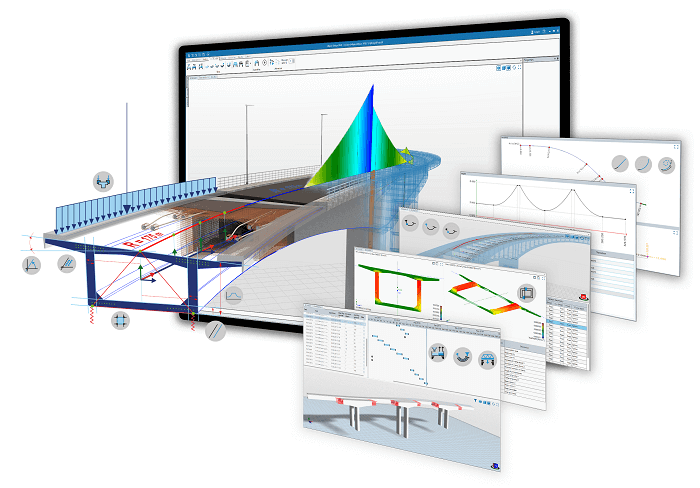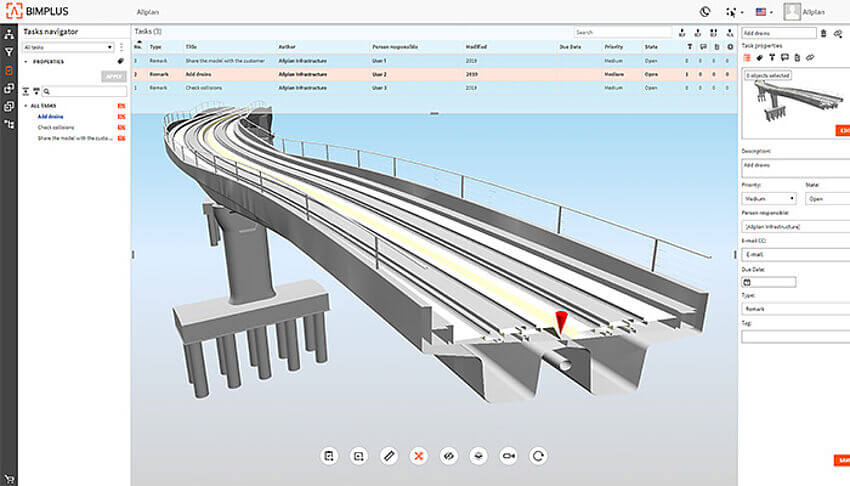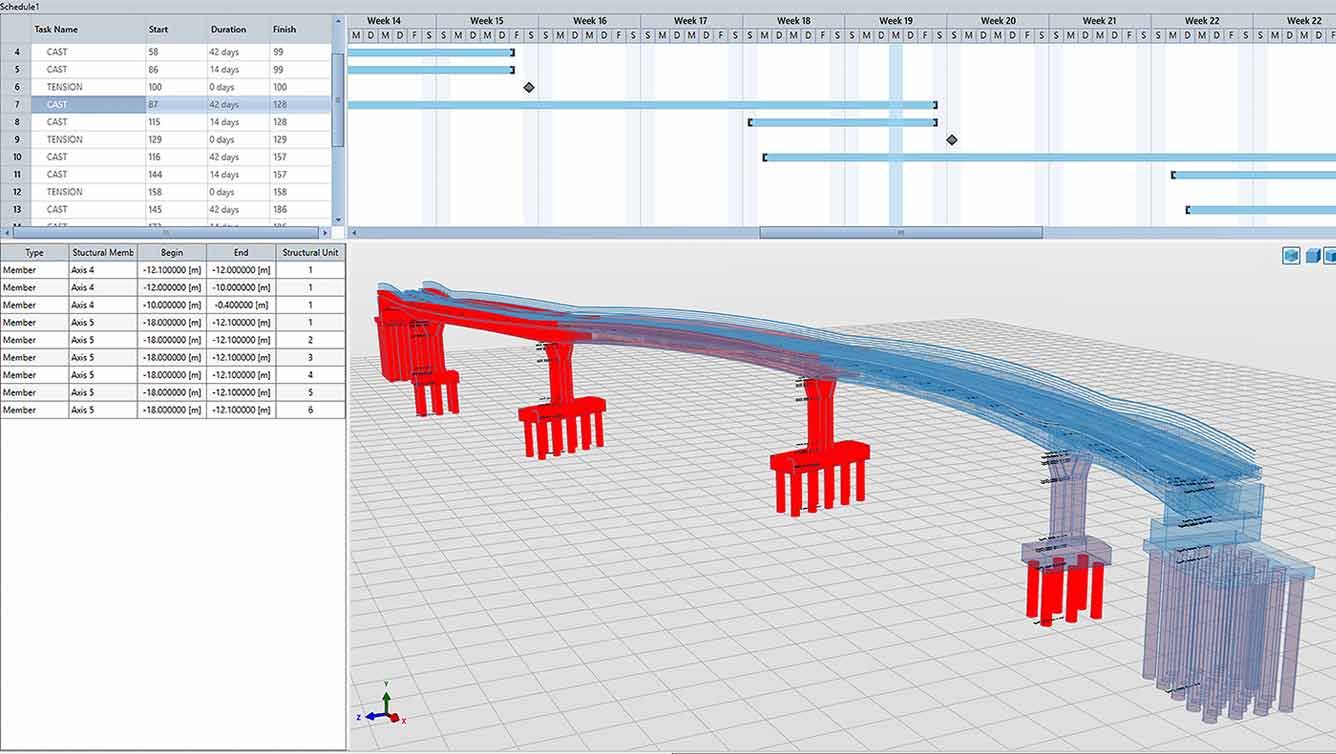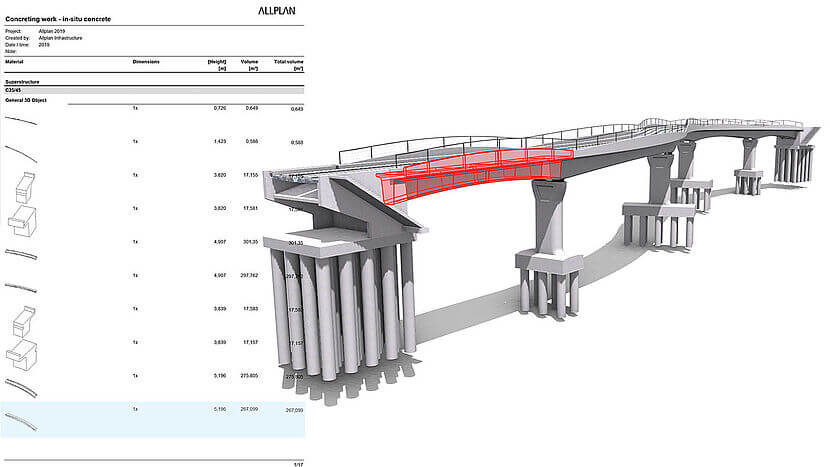
© ALLPLAN
5 reasons bridge engineers in Asia-Pacific (APAC) region should use Allplan Bridge for their bridge projects
Allplan Bridge is a software application that provides advanced tools for the design and analysis of bridges. It is a versatile tool that can be used for a wide range of bridge projects, making it an ideal choice for bridge engineers in the Asia-Pacific (APAC) region.
Here are five reasons why bridge engineers in APAC should consider using Allplan Bridge for their bridge projects:
Advanced 3D modeling capabilities
As with many other industries, bridge engineering in APAC is becoming more reliant on technology. This includes the use of software applications like Allplan Bridge for design and analysis, as well as the use of innovative construction techniques like 3D printing and modular construction.
One of the key benefits of using Allplan Bridge is its advanced 3D modeling capabilities. The software allows engineers to create accurate and detailed models of bridges, which can help to identify potential issues or design flaws early on in the design process.
By creating 3D models of bridges, engineers can easily visualize the structure and identify any areas that may need further attention. This can help to reduce the risk of errors or rework later in the design process, as well as ensure that the final design is both safe and efficient.
Allplan Bridge also includes features for creating parametric models, which can be easily modified and adjusted as needed. This can help to improve the overall design process, as engineers can quickly iterate on designs and make changes as necessary.

Wide range of bridge types

The APAC region has diverse geographies and varying levels of infrastructure development, which requires engineers to design and analyze a wide variety of bridge types.
Allplan Bridge supports the design and analysis of a wide range of bridge types, including steel, concrete, and composite structures. This makes it a versatile tool that can be used for many different types of bridge projects.
Whether you are designing a small pedestrian bridge or a large highway overpass, Allplan Bridge has the tools and capabilities you need to create a safe and efficient design. The software includes a range of standard bridge templates, as well as the ability to create custom templates for specific project requirements.
By using Allplan Bridge, bridge engineers can have confidence that their designs will meet all necessary structural requirements and standards, regardless of the bridge type or configuration.
Easy integration with other tools
Many projects in the APAC region involve collaborations with stakeholders across different disciplines and locations.
Allplan Bridge can be easily integrated with other tools commonly used in the construction and civil engineering industries, such as BIM software and CAD programs. Allplan Bridge’s ability to import 3D models from other software applications and support data export in different formats can help to streamline the design process and improve collaboration between different teams and stakeholders.
For example, engineers can import 3D models from other software applications, such as Revit or AutoCAD, and use Allplan Bridge to perform detailed analysis and design. This can help to save time and reduce the risk of errors, as engineers can work within a single environment and avoid the need for manual data transfer.
Allplan Bridge also supports the export of data in a range of formats, such as IFC, DXF, and DWG, making it easy to share design data with other stakeholders in the project, such as contractors and construction teams.

Robust analysis capabilities

Given the region’s exposure to natural disasters and extreme weather events, bridge projects in APAC are placing a greater emphasis on resilience and safety. This includes the use of advanced monitoring systems to detect and mitigate potential risks, as well as the use of materials and designs that can withstand extreme weather conditions.
Allplan Bridge’s robust analysis capabilities can be useful for bridge engineers in APAC, as projects in the region may involve high seismic activity, typhoons, and other extreme weather conditions. Allplan Bridge’s static and dynamic analysis features can help bridge engineers design structures that are safe and can withstand these conditions, which is essential in a region that is prone to natural disasters.
Allplan Bridge provides robust analysis capabilities that can help to ensure the structural integrity and safety of bridge designs. The software includes features for static and dynamic analysis, as well as tools for designing and verifying reinforcement.
By using Allplan Bridge to perform detailed analysis, engineers can ensure that their designs meet all necessary safety and structural requirements. The software can be used to analyze a wide range of factors, such as loading conditions, wind and earthquake loads, and soil conditions.
Allplan Bridge also includes features for designing and verifying reinforcement, such as creating reinforcement layouts and generating reinforcement lists. This can help to ensure that the final design is both safe and efficient, and that all necessary reinforcements are included as required.
Comprehensive documentation and reporting
Allplan Bridge includes features for generating detailed documentation and reports, such as construction and reinforcement drawings, material lists, and design reports. This can help to improve communication and collaboration with other stakeholders in the bridge construction process.
By using Allplan Bridge to generate detailed documentation and reports, engineers can easily share critical project information with other stakeholders. This can help to ensure that all parties are on the same page and that everyone has access to the latest design information.
For example, construction teams can use Allplan Bridge to generate detailed construction drawings and material lists, which can help to ensure that the final bridge construction process goes smoothly. Engineers can also use Allplan Bridge to generate design reports, which can be used to communicate project requirements and design specifications to other stakeholders, such as regulatory bodies or project owners.

Many bridge projects in APAC are being developed as part of cross-border initiatives, with multiple countries working together to design and build infrastructure that connects their regions. This includes projects like the Hong Kong-Zhuhai-Macau Bridge and the ASEAN Connectivity Project. Therefore, Allplan Bridge’s capability to provides a range of features for collaboration and teamwork, such as versioning and revision control, which can help to ensure that everyone is working with the latest design information plays as the key role to the success of a project. This can help to reduce the risk of errors and ensure that the final bridge design meets all necessary safety and structural requirements.
In conclusion, if you are a bridge engineer in the APAC region, Allplan Bridge is definitely worth considering. With its advanced tools and capabilities, easy integration with other software, and comprehensive documentation and reporting features, Allplan Bridge can help to improve the design and construction of bridges and ensure that they meet all necessary safety and structural requirements.
To experience Allplan Bridge’s innovative features, download the 14-day free trial now and bring your bridge projects closer to success.
ALLPLAN is part of the Nemetschek Group.
-
Singapore: ALLPLAN Software Singapore PTE. LTD. |
4 Battery Road #25-01, Bank of China Building
49908 Singapore - customercare.singapore@allplan.com

